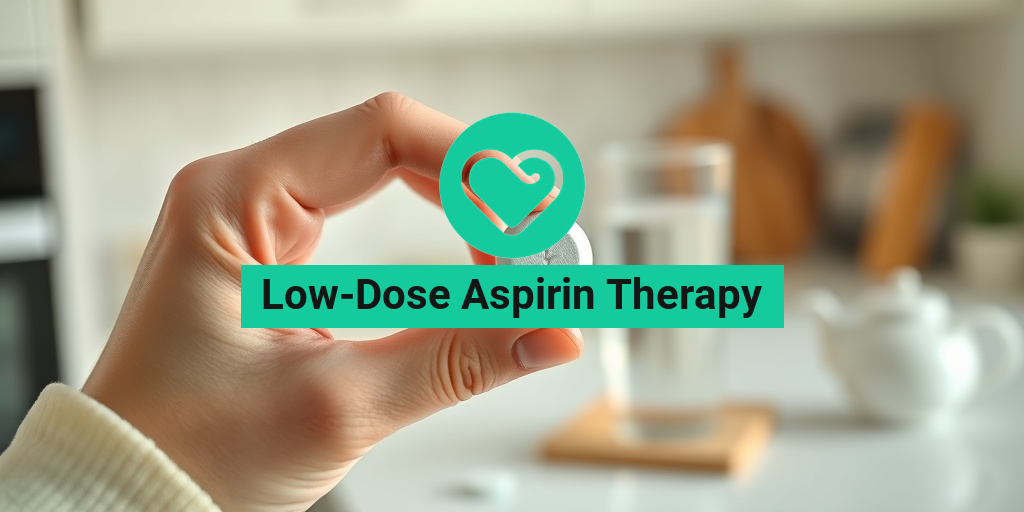What Is Subcortical Ischemic Vascular Disease?
Subcortical Ischemic Vascular Disease (SIVD) is a condition that affects the small blood vessels in the brain, leading to reduced blood flow and oxygen supply to certain areas. This disease is often associated with small vessel ischemic disease, which can result in various neurological issues. Understanding SIVD is crucial, as it can significantly impact cognitive function and overall brain health.
Understanding the Mechanism
The brain relies on a complex network of blood vessels to deliver oxygen and nutrients. In SIVD, the small vessels become narrowed or blocked, often due to factors like hypertension, diabetes, and high cholesterol. This blockage can lead to ischemia, which is a lack of blood flow, causing damage to the brain tissue. Over time, this can result in significant cognitive decline and other neurological symptoms.
Causes and Risk Factors
Several factors can contribute to the development of subcortical ischemic vascular disease:
- Hypertension: High blood pressure is a leading cause of vascular damage.
- Diabetes: This condition can damage blood vessels over time.
- High Cholesterol: Elevated cholesterol levels can lead to plaque buildup in blood vessels.
- Smoking: Tobacco use is a significant risk factor for vascular diseases.
- Age: The risk increases with age, particularly in individuals over 60.
Recognizing these risk factors is essential for prevention and management. Regular check-ups and lifestyle modifications can help mitigate these risks.
Symptoms of Subcortical Ischemic Vascular Disease
The symptoms of subcortical ischemic vascular disease can vary widely among individuals, depending on the extent of the vascular damage and the areas of the brain affected. Here are some common symptoms to be aware of:
Cognitive Impairment
One of the most significant impacts of SIVD is on cognitive function. Individuals may experience:
- Memory Loss: Difficulty recalling recent events or information.
- Confusion: Increased difficulty in understanding or processing information.
- Difficulty with Problem-Solving: Challenges in planning or executing tasks.
Physical Symptoms
In addition to cognitive issues, SIVD can manifest physically. Symptoms may include:
- Weakness: Noticeable weakness in one side of the body.
- Coordination Problems: Difficulty with balance and coordination.
- Speech Difficulties: Trouble speaking or slurred speech.
Emotional and Behavioral Changes
Individuals with SIVD may also experience emotional changes, such as:
- Depression: Feelings of sadness or hopelessness.
- Anxiety: Increased worry or fear about daily activities.
- Personality Changes: Alterations in behavior or mood swings.
If you or a loved one is experiencing any of these symptoms, it is crucial to seek medical advice. Early diagnosis and intervention can significantly improve outcomes and quality of life.
Conclusion
Subcortical ischemic vascular disease is a serious condition that can lead to significant cognitive and physical impairments. Understanding its causes, symptoms, and risk factors is vital for effective management. If you’re looking for more information or resources on SIVD, consider visiting Yesil Health AI for evidence-based health answers. Taking proactive steps towards brain health can make a substantial difference in your overall well-being. 🧠💪

Causes and Risk Factors
Subcortical Ischemic Vascular Disease (SIVD) is a condition that arises from reduced blood flow to the small vessels in the brain, leading to ischemic damage. Understanding the causes and risk factors associated with this disease is crucial for prevention and management.
Causes of Subcortical Ischemic Vascular Disease
The primary cause of SIVD is the narrowing or blockage of small blood vessels in the brain. This can occur due to several factors:
- Atherosclerosis: This is the buildup of fatty deposits in the arteries, which can restrict blood flow.
- Hypertension: High blood pressure can damage blood vessels over time, making them more susceptible to ischemia.
- Diabetes: This condition can lead to vascular damage, increasing the risk of ischemic events.
- Smoking: Tobacco use is a significant risk factor that contributes to vascular disease.
- Hyperlipidemia: Elevated cholesterol levels can lead to plaque formation in blood vessels.
Risk Factors for Subcortical Ischemic Vascular Disease
Several risk factors can increase the likelihood of developing SIVD. These include:
- Age: The risk of SIVD increases with age, particularly in individuals over 60.
- Family History: A family history of vascular diseases can predispose individuals to SIVD.
- Obesity: Excess body weight is linked to various health issues, including vascular problems.
- Physical Inactivity: A sedentary lifestyle can contribute to the development of risk factors like obesity and hypertension.
- Chronic Inflammatory Conditions: Conditions such as rheumatoid arthritis can increase the risk of vascular damage.
Recognizing these causes and risk factors is essential for early intervention and management of Subcortical Ischemic Vascular Disease. By addressing modifiable risk factors, individuals can significantly reduce their chances of developing this condition. 🩺
Diagnosis of Subcortical Ischemic Vascular Disease
Diagnosing Subcortical Ischemic Vascular Disease involves a combination of clinical evaluation and imaging studies. Early diagnosis is vital for effective management and to prevent further complications.
Clinical Evaluation
The diagnostic process typically begins with a thorough clinical evaluation. Healthcare providers will:
- Review Medical History: A detailed history of symptoms, risk factors, and family history is essential.
- Conduct a Physical Examination: This may include neurological assessments to evaluate cognitive function and motor skills.
Imaging Studies
Imaging plays a crucial role in diagnosing SIVD. The following imaging techniques are commonly used:
- Magnetic Resonance Imaging (MRI): MRI is the gold standard for diagnosing SIVD. It can reveal changes in brain structure, including white matter lesions and small vessel ischemic changes.
- Computed Tomography (CT) Scan: While less sensitive than MRI, a CT scan can help identify larger strokes and rule out other conditions.
Understanding MRI Results
Patients often wonder, “What does small vessel ischemic disease mean on my MRI?” MRI results may show:
- White Matter Hyperintensities: These are areas of increased signal on MRI that indicate damage to the brain’s white matter.
- Subcortical Infarcts: Small areas of dead tissue due to lack of blood flow can be identified.
Interpreting these results requires expertise, and it’s essential to discuss findings with a healthcare provider to understand their implications fully. 🧠
In summary, the diagnosis of Subcortical Ischemic Vascular Disease involves a comprehensive approach that includes clinical evaluation and advanced imaging techniques. Early detection can lead to better management strategies and improved outcomes for patients. 🌟

Complications and Prognosis
Subcortical Ischemic Vascular Disease (SIVD) is a condition that arises from reduced blood flow to the brain’s subcortical regions, often due to small vessel disease. Understanding the complications and prognosis associated with this condition is crucial for patients and caregivers alike.
Understanding the Complications
Patients diagnosed with subcortical ischemic vascular disease may face a variety of complications, which can significantly impact their quality of life. Some of the most common complications include:
- Cognitive Decline: One of the most concerning complications is cognitive impairment. Patients may experience difficulties with memory, attention, and executive functions, leading to conditions such as vascular dementia.
- Mobility Issues: SIVD can affect motor skills, resulting in gait disturbances and an increased risk of falls. This can further complicate the patient’s overall health and independence.
- Emotional Changes: Depression and anxiety are prevalent among individuals with SIVD. The chronic nature of the disease and its impact on daily life can lead to emotional distress.
- Increased Stroke Risk: Patients with subcortical ischemic vascular disease are at a higher risk of experiencing strokes, which can lead to further neurological damage and complications.
Prognosis of Subcortical Ischemic Vascular Disease
The prognosis for individuals with SIVD can vary widely based on several factors, including the severity of the disease, the presence of other health conditions, and the effectiveness of management strategies. Generally, the prognosis can be categorized as follows:
- Early Detection: If diagnosed early and managed effectively, many patients can maintain a good quality of life and slow the progression of the disease.
- Advanced Disease: In cases where the disease has progressed significantly, patients may face more severe cognitive and physical impairments, leading to a poorer prognosis.
- Comorbid Conditions: The presence of other health issues, such as hypertension, diabetes, or heart disease, can complicate the prognosis and increase the risk of adverse outcomes.
Overall, while subcortical ischemic vascular disease can lead to serious complications, proactive management and lifestyle changes can significantly improve outcomes for many patients. 🌟
Treatment Options Available
When it comes to managing subcortical ischemic vascular disease, a multifaceted approach is often necessary. Treatment options can vary based on the severity of the disease and the individual needs of the patient. Here are some of the most common treatment strategies:
Medications
Medications play a crucial role in managing SIVD. Some of the most commonly prescribed include:
- Antihypertensives: Controlling blood pressure is vital in preventing further vascular damage. Medications such as ACE inhibitors, beta-blockers, and diuretics may be prescribed.
- Anticoagulants: These medications help prevent blood clots, reducing the risk of stroke. Common options include warfarin and newer anticoagulants.
- Cholesterol-Lowering Drugs: Statins may be recommended to manage cholesterol levels and reduce cardiovascular risk.
Lifestyle Modifications
In addition to medications, lifestyle changes can significantly impact the management of SIVD. Key modifications include:
- Diet: A heart-healthy diet rich in fruits, vegetables, whole grains, and lean proteins can help manage weight and blood pressure.
- Exercise: Regular physical activity is essential for maintaining mobility and overall health. Patients should aim for at least 150 minutes of moderate exercise each week.
- Smoking Cessation: Quitting smoking is crucial, as it significantly increases the risk of vascular diseases.
Rehabilitation Services
For patients experiencing cognitive or mobility issues, rehabilitation services can be beneficial. These may include:
- Physical Therapy: Helps improve strength, balance, and coordination.
- Occupational Therapy: Assists patients in regaining independence in daily activities.
- Speech Therapy: Beneficial for those experiencing communication difficulties.
In conclusion, while subcortical ischemic vascular disease presents significant challenges, a combination of medical treatment, lifestyle changes, and rehabilitation can help manage symptoms and improve quality of life. 🌈

Home Care and Lifestyle Changes
Living with Subcortical Ischemic Vascular Disease (SIVD) can be challenging, but making certain lifestyle changes can significantly improve your quality of life. This condition, which affects the small blood vessels in the brain, can lead to cognitive decline and other neurological issues. Here are some effective home care strategies and lifestyle modifications to consider:
1. Healthy Diet Choices
Nutrition plays a crucial role in managing SIVD. A balanced diet can help reduce the risk of further vascular damage. Focus on:
- Fruits and Vegetables: Aim for a variety of colors to ensure a wide range of nutrients.
- Whole Grains: Foods like brown rice, quinoa, and whole wheat bread can help maintain healthy blood sugar levels.
- Lean Proteins: Incorporate sources like fish, poultry, beans, and legumes.
- Healthy Fats: Opt for unsaturated fats found in olive oil, avocados, and nuts.
2. Regular Physical Activity
Engaging in regular exercise is vital for maintaining cardiovascular health. Aim for at least 150 minutes of moderate aerobic activity each week. Activities can include:
- Walking: A simple yet effective way to stay active.
- Swimming: Gentle on the joints and great for overall fitness.
- Yoga: Helps improve flexibility and reduce stress.
3. Cognitive Engagement
Keeping your brain active is essential for managing SIVD. Consider activities that challenge your mind, such as:
- Puzzles: Crossword puzzles, Sudoku, and jigsaw puzzles can enhance cognitive function.
- Reading: Engaging with books or articles can stimulate your brain.
- Learning New Skills: Taking up a new hobby or learning a language can be beneficial.
4. Stress Management
Chronic stress can exacerbate symptoms of SIVD. Implementing stress-reduction techniques can be helpful:
- Meditation: Practicing mindfulness can help calm the mind.
- Deep Breathing Exercises: Simple breathing techniques can reduce anxiety.
- Social Connections: Maintaining relationships with friends and family can provide emotional support.
5. Medication Management
For those diagnosed with SIVD, adhering to prescribed medications is crucial. Regularly consult with your healthcare provider to ensure:
- Proper Dosage: Take medications as directed.
- Regular Check-ups: Schedule routine appointments to monitor your condition.
Preventing Subcortical Ischemic Vascular Disease
Prevention is key when it comes to Subcortical Ischemic Vascular Disease. By adopting a proactive approach, you can significantly reduce your risk of developing this condition. Here are some effective strategies:
1. Control Blood Pressure
High blood pressure is a major risk factor for SIVD. Regular monitoring and management through lifestyle changes and medication can help keep your blood pressure in check. Consider:
- Reducing Sodium Intake: Limit processed foods and opt for fresh ingredients.
- Regular Exercise: Physical activity can help lower blood pressure.
2. Manage Diabetes
If you have diabetes, controlling your blood sugar levels is essential. This can be achieved through:
- Healthy Eating: Focus on a balanced diet rich in fiber.
- Regular Monitoring: Keep track of your blood sugar levels and adjust your diet accordingly.
3. Quit Smoking
Smoking significantly increases the risk of vascular diseases. If you smoke, seek support to quit. Benefits of quitting include:
- Improved Circulation: Your blood flow will improve, reducing the risk of ischemic events.
- Better Overall Health: Quitting smoking can enhance your quality of life.
4. Limit Alcohol Consumption
Excessive alcohol intake can lead to various health issues, including high blood pressure. To minimize risks:
- Moderation is Key: Stick to recommended guidelines—up to one drink per day for women and two for men.
5. Regular Health Screenings
Routine check-ups with your healthcare provider can help identify risk factors early. Discuss:
- Cholesterol Levels: High cholesterol can contribute to vascular disease.
- Heart Health: Regular cardiovascular assessments can help monitor your overall health.
By implementing these home care strategies and preventive measures, you can take control of your health and reduce the risk of Subcortical Ischemic Vascular Disease. Remember, small changes can lead to significant improvements! 🌟

Frequently Asked Questions about Subcortical Ischemic Vascular Disease
What is Subcortical Ischemic Vascular Disease?
Subcortical Ischemic Vascular Disease refers to a condition characterized by reduced blood flow to the subcortical areas of the brain, often due to small vessel disease. This can lead to various neurological symptoms and cognitive impairments.
What are the symptoms of Subcortical Ischemic Vascular Disease?
Symptoms can vary widely but may include:
- Memory problems
- Difficulty concentrating
- Changes in mood or personality
- Motor function issues
- Gait disturbances
How is Subcortical Ischemic Vascular Disease diagnosed?
Diagnosis typically involves a combination of:
- Medical history review
- Neurological examination
- Imaging tests such as MRI or CT scans to identify ischemic changes
What does small vessel ischemic disease mean on my MRI?
When your MRI report mentions small vessel ischemic disease, it indicates that there are changes in the small blood vessels of the brain, which can lead to reduced blood flow and potential damage to brain tissue.
What is moderate small vessel ischemic disease?
Moderate small vessel ischemic disease suggests that there is a significant level of damage or changes in the small blood vessels, which may require monitoring and management to prevent further complications.
What are the treatment options for Subcortical Ischemic Vascular Disease?
Treatment may include:
- Medications to manage risk factors (e.g., hypertension, diabetes)
- Physical therapy to improve mobility
- Cognitive rehabilitation for memory and concentration issues
- Lifestyle changes such as diet and exercise
Can Subcortical Ischemic Vascular Disease be prevented?
While not all cases can be prevented, managing risk factors such as high blood pressure, diabetes, and cholesterol levels can significantly reduce the risk of developing Subcortical Ischemic Vascular Disease.
Is there a link between Subcortical Ischemic Vascular Disease and dementia?
Yes, there is a potential link. Subcortical Ischemic Vascular Disease can contribute to cognitive decline and may increase the risk of vascular dementia.
Where can I find more information about Subcortical Ischemic Vascular Disease?
For more detailed information, consider consulting medical professionals or reputable health websites that specialize in vascular diseases and brain health.




